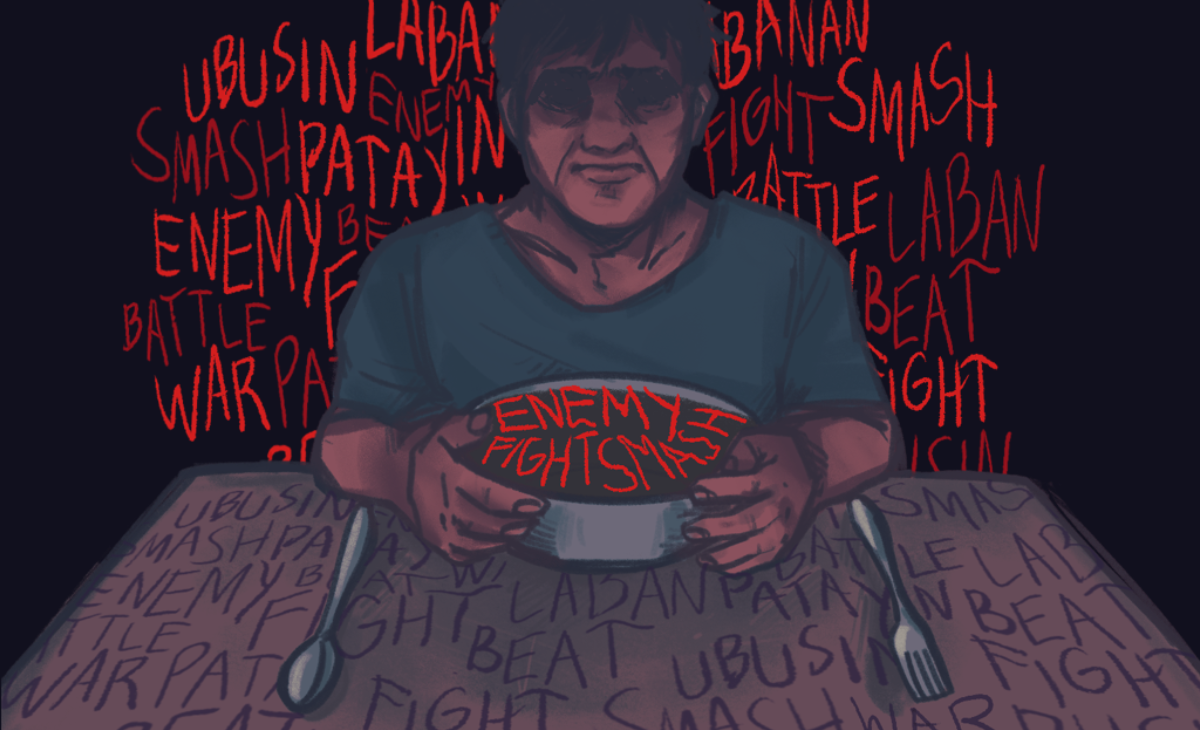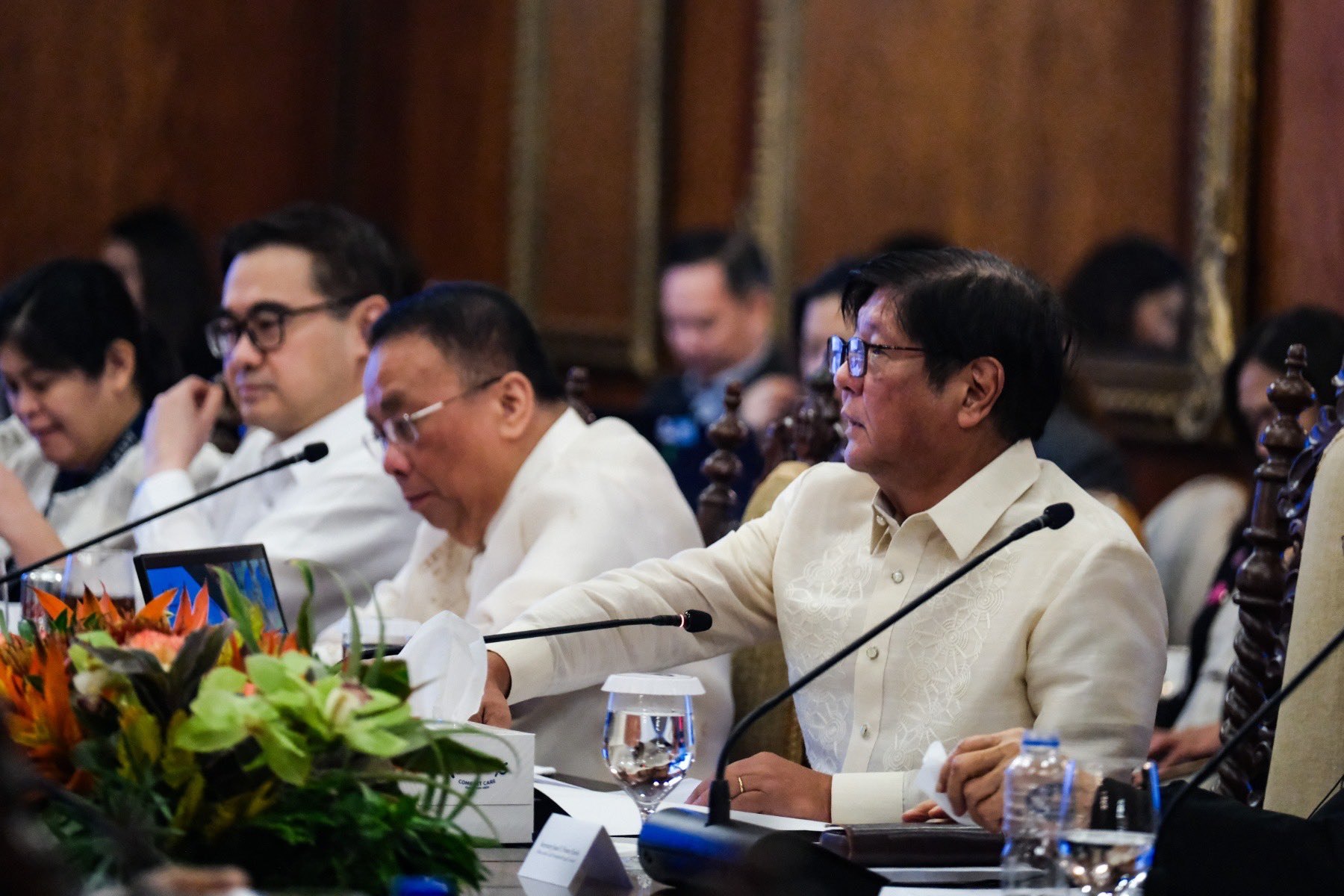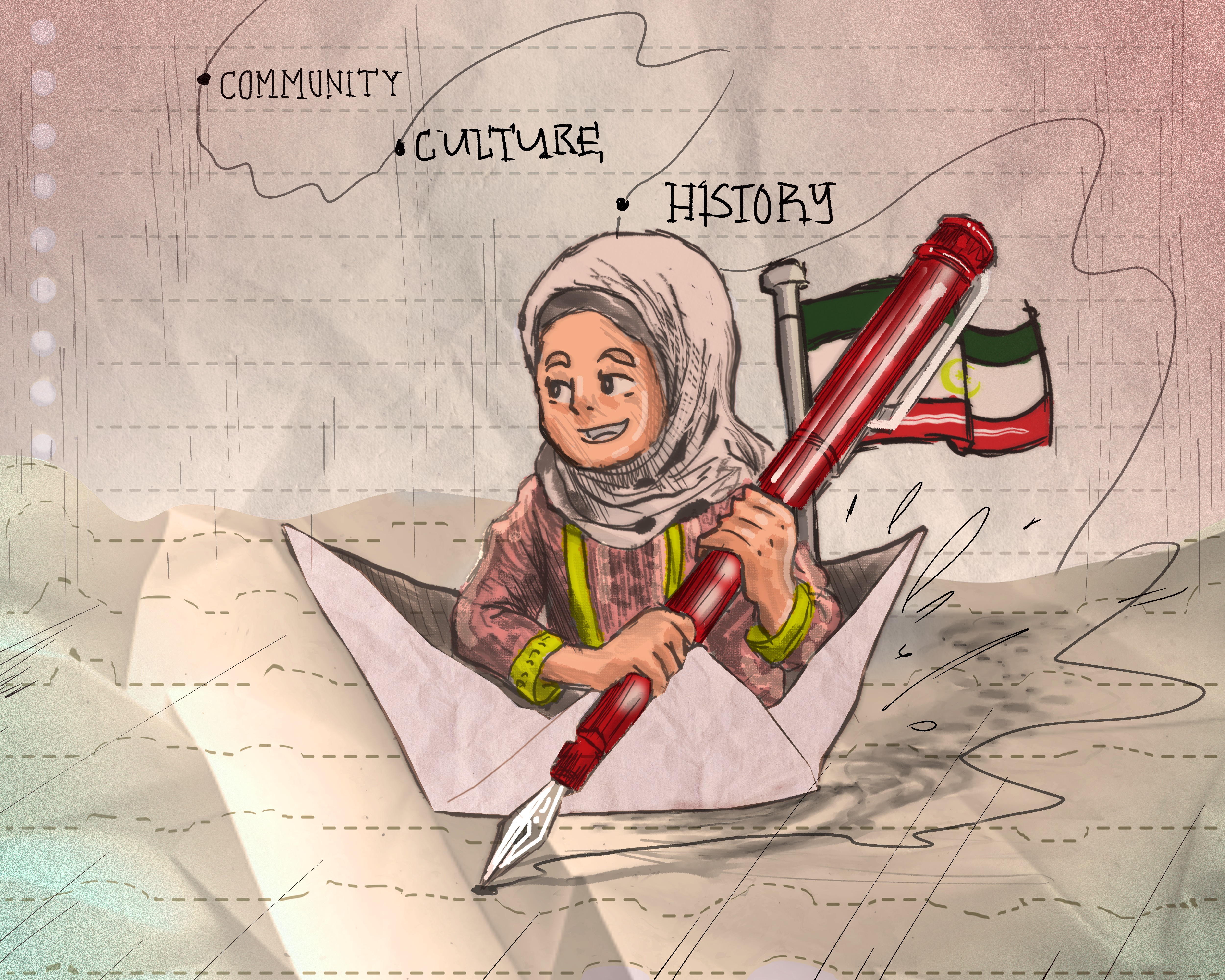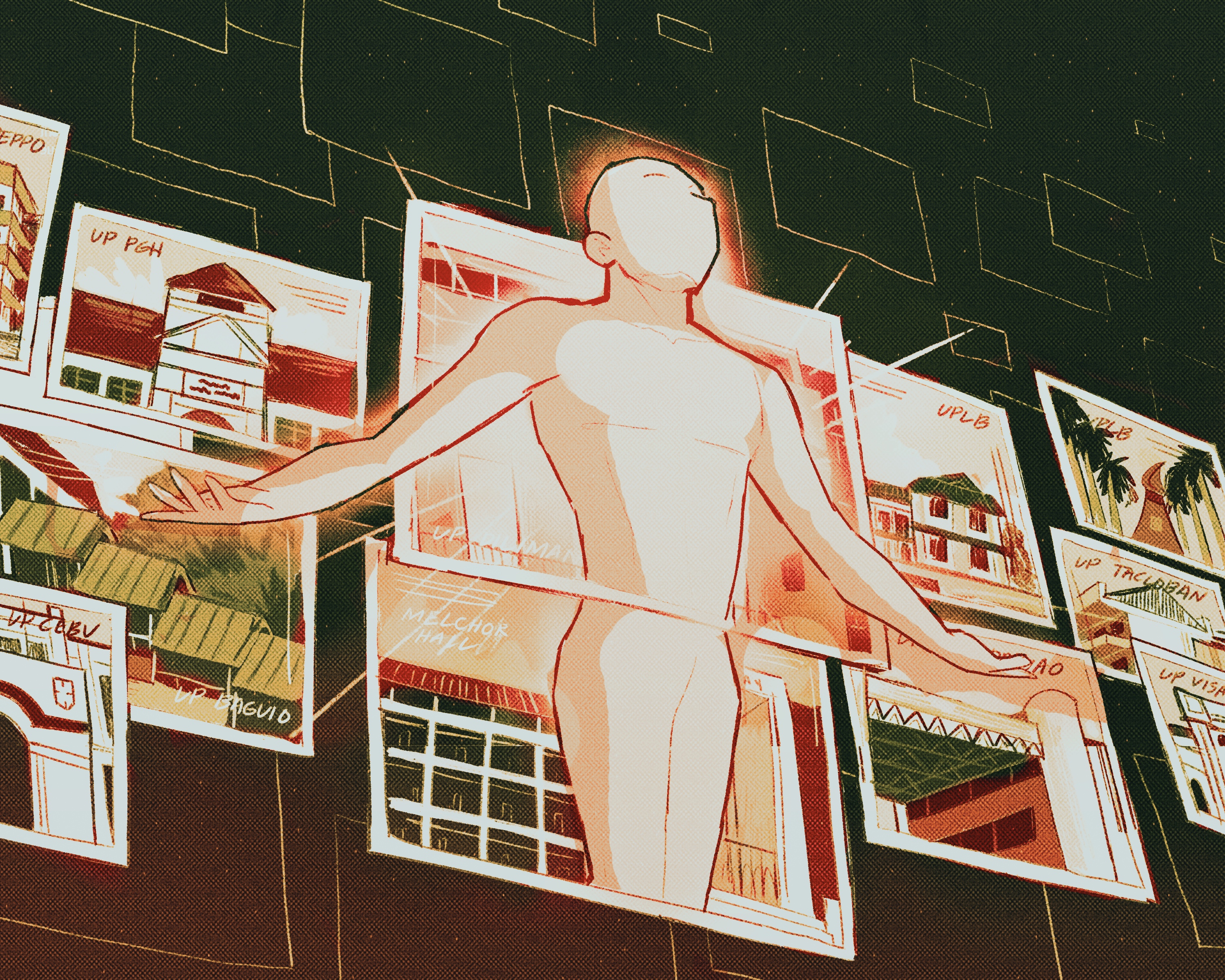War is no longer confined to the trenches and battlefields. Words like “beat,” “strike,” and “smash” have become part of our everyday lexicon, uprooted from their patently violent implications.
In the era of corona, we see more and more of this violent language in public discourse. Medical workers are called “frontliners;” there is an invisible “enemy” we need to “fight”—a line of speech utilized by both journalists and the people in power.
The message to the public is clear: We are facing an urgent threat, a common enemy, and we need to cooperate with the authorities.
It is natural for a government overrun by military men to have a militaristic response to everything. When all you have is a hammer, everything looks like a nail, goes Abraham Maslow’s famous saying. When all that the Duterte administration has are guns, it is no wonder, then, that practically everything has become a target.
On a Perpetual War Footing
For most of its violent history, the Philippines has been in a state of war. According to the government, we have no shortage of supposed adversaries from Muslim rebels and communist insurgents, to more recent “public enemies” like drugs and the coronavirus. Contemporary administrations, aware of the power of warspeak, have taken to militarized rhetoric to rally the people behind a common cause.
So-called wars have been waged against poverty, even against illiteracy and disinformation, by governments seeking public support and participation. Enemies always have to be singled out and targeted.
And who can forget about the war on drugs? Calling it a war hid the fact that it was a one-sided slaughter where murdered children were rationalized as collateral damage. It cannot even be called a war on the poor, for, in a war, there should be two sides fighting.
When the virus came, the Duterte government stuck to their guns and pulled out their tried-and-tested war playbook, prompting political scientist Aries Arugay to call the administration a “one-trick pony” whose answer to every single issue is the use of force. “Duterte has pretty much rested everything to the military and vice versa,” Arugay said.
‘Battling’ the Virus
Dutere’s hard-headed insistence on a militaristic approach extends to all facets of the national pandemic response.
“Together, we shall fight this pandemic with the same fervor as our campaign against illegal drugs, criminality, insurgency, and corruption,” the president said in his State of the Nation speech this year. Behind this single sentence is a pattern of fear-based policing that curtails civil liberties in the name of defeating the supposed enemy.
From mass arrests to threatening civilians with violence, the government has doubled down on its militaristic methods. Almost 80,000 quarantine violators have been arrested since the start of the lockdown, with more than 900 complaints filed at the Commission on Human Rights alleging torture and inhumane treatment from state forces.
International watchdog Human Rights Watch has already flagged the response of the Philippine government in handling the coronavirus crisis. “Instead of expanding testing and adopting other public health measures, the administration seems intent on deploying the state security forces and drug war tactics that have already proven so catastrophic to Filipinos,” Phil Robertson, HRW’s Deputy Director for Asia Division, wrote in a July 15 report.
When the tough-talking president talks about war and punishment in his late-night talks, it translates to what is happening on the ground. His words become flesh—and often take flesh. This constant barrage of violent rhetoric from the supposed leader of the land desensitizes the public to what is essentially hate speech exhorting violence.
War Is Death
Nathan Kalmoe, an associate professor of political communication at the Louisiana State University, has written extensively on how loaded political rhetoric incites violence among the populace. Even mildly suggestive phrases like “fighting for the future,” Kalmoe claims, can increase support for violence among people with aggressive personalities.
This extensive use of war language during a crisis is intentional. Articulating the situation in war terms instantly captures public attention and turns everyone into virtual soldiers awaiting orders from above.
War metaphors are easier to digest compared to the often convoluted but more nuanced language of science and policy. In warspeak, the terms are black and white—we are good and there is a bad enemy that needs to be stopped.
No less than the United Nations High Commissioner for Human Rights has publicly condemned the Duterte government’s habitual use of overtly violent rhetoric, saying there is incontrovertible evidence that such a practice translates to rights abuses and outright killings.
Undeterred, Duterte continued with his usual violence-laden speeches throughout the crisis, firing his trademark arsenal of profanities, and even going as far as saying quarantine violators should be shot on the spot.
For neuroscientist Tabitha Moses, framing the pandemic response as yet another war carries dangerous undercurrents. “Language affects cognition, and cognition affects our behaviors. Wartime language has been shown to alter our behavior—and not always for the better.”
During a war, Moses explained, the weak are treated as deadweights. “The dichotomy of strength versus weakness implies choice, as though those who were infected chose to surrender. In reality, that which makes us appear strong and confident in a war only works in the context of a battle with other humans,” she explained.
Moses also pointed out how thinking in war terms loosens the public’s morals and ethics. This, then, gives the government leeway in doing actions that would not be normally tolerated during peacetime like choosing who gets to live or die.
“At the end of a war, nobody really wins. To see this pandemic from a military viewpoint is to accept that lives will be lost, that people are enemies of each other,” said UP College of Medicine associate professor Ronnie Baticulon. “That is not how we do medicine.”
For a nation beholden to a culture of death, one that has taken countless lives through both government action and inaction, putting everything in war terms has perhaps become the only possible way to speak honestly. ●
This article was first published in the Collegian's September 21, 2020, issue.







